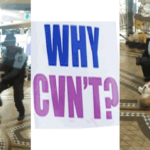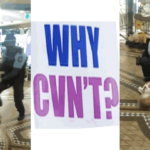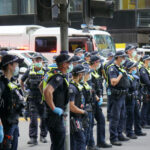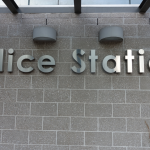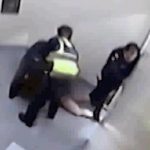Police Assault on Lim Raises Questions About the Enforcement of Law in NSW
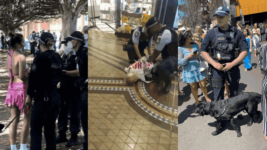
Sydney is aghast over the assault perpetrated upon nonviolent elderly protester Danny Lim by two police officers on Tuesday. And there’s much chatter on social media about the broader implications of this type of incident being carried out by officers who supposedly exist to protect the public.
The footage of the attack on Lim shows officers, at the slightest sign of resistance from the 78-year-old man, automatically dragging him forward, kicking out his feet from under him and slamming him face first into the tiled floor of the QVB shopping mall in plain sight of the public.
The officers don’t discuss the approach they’re about to take with the man, which suggests that this is what they’ve been trained to do. And they obviously had an opportunity to show discretion in this instance, so the attack is what the officers must have considered the best course of action to be.
And while this incident has gripped the local psyche for a number of reasons, certainly not the least being that Danny is a much-loved figure in Sydney, the incident is not a one-off in terms of excessive use of force on the part of the NSW Police Force, rather it’s just the usual these days.
NSW: The Police State
Sydney is holding the WorldPride event in February next year. And earlier this month, Sydney lord mayor Clover Moore made it publicly known that she does not want tourists fronting up to her city only to be confronted by “heavy-handed policing”.
Indeed, when a city’s mayor is forced to warn a state police force that it shouldn’t be harassing, providing unwarranted attention to, or subjecting tourists to the overpolicing that has become all too familiar to locals, one knows “something is rotten in the state” of NSW.
The long-term Sydney city mayor was calling out the ever-increasing habit NSW police has of subjecting those who attend events to drug dog surveilling and in numerous instances once a canine makes an indication, dragging attendees off to be strip searched.
The Redfern Legal Centre released figures in August that showed over the pandemic period, NSW police carried out 4,500 strip searches between July 2020 and May 2022, despite the fact that for vast amounts of that time, people were locked down or were keeping off the streets.
Moore made her comments against a history in this city that involves NSW police brutality specifically aimed at LGBTIQ communities, as well as a growing police tendency to greet punters at the kind of events that WorldPride will involve with walls of blue bodies accompanied by dogs.
The war on protesters
But NSW police doesn’t simply overpolice queer communities. Officers have a tendency to single out First Nations people, people of colour, young people and those expressing political opinions in the form of demonstrations.
In October 2020, a Sydney university student-led campaign to have the right to protest restored post-lockdown resulted in repeated excessive use of force incidents, which continued until officers accidentally assaulted a law professor who was simply present at a demonstration as an observer.
While last April saw the Perrottet government further emboldened NSW police by presenting it with some of the most draconian anti-protest laws on the planet.
Obstructing roads, tunnels, bridges or major facilities can now see an individual subjected to up to two years prison and/or a $22,000 fine.
Following the passing of these laws, NSW police has questionably staked out a private property where climate defenders were gathered, raided it twice, as well as later swooping in on an activist picnic in an inner west park.
And NSW police officers are now conducting home visits to warn activists pre-protest against attending such events.
Danny’s violent arrest over a solo protest on Tuesday was an extreme example of this crackdown on nonviolent civil dissent.
Yet, this footage from September shows officers in Martin Place spending close to 20 minutes telling ardent Assange supporter Tony Wakeham and another activist, why the pair couldn’t conduct a demonstration consisting of two people holding a banner in public without prior authorisation.


